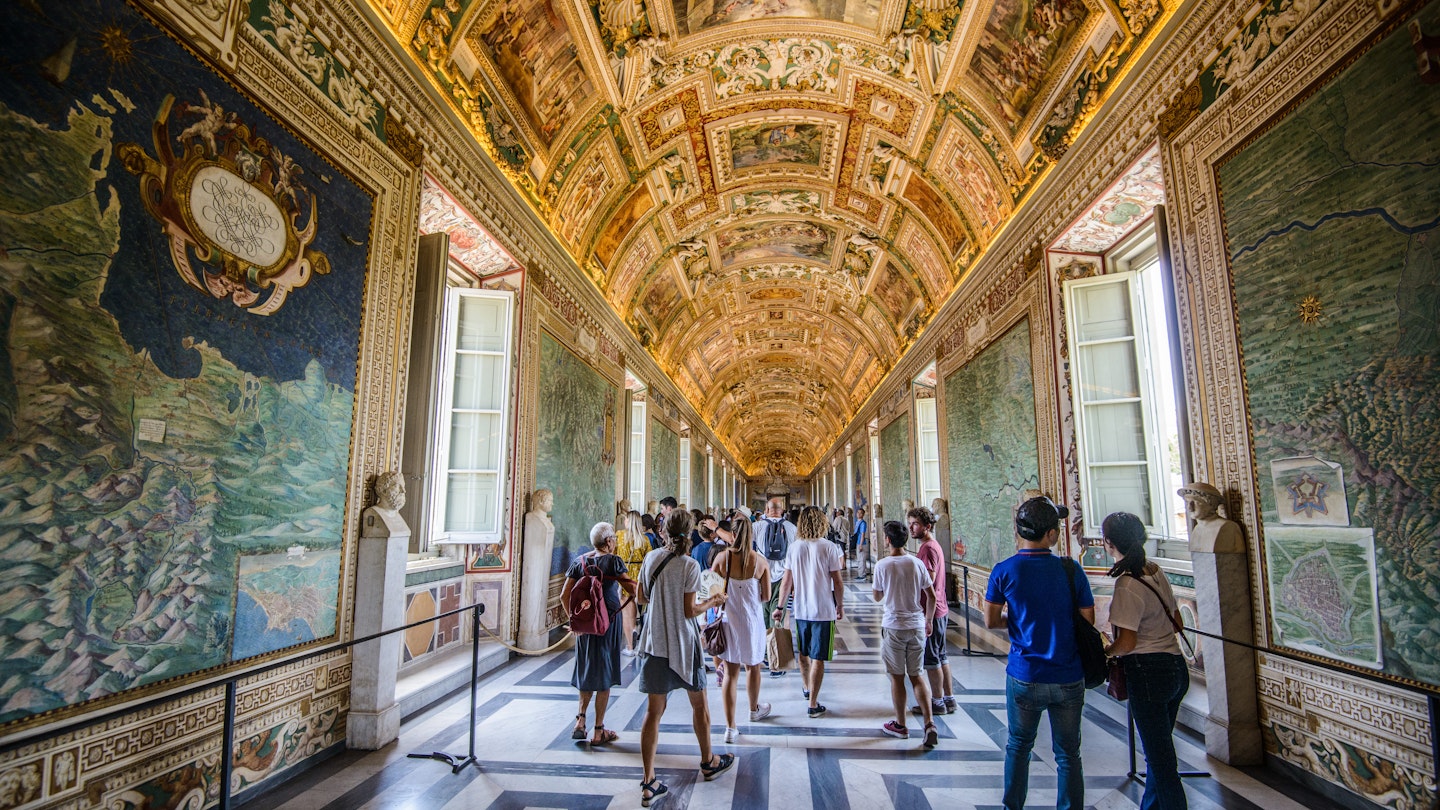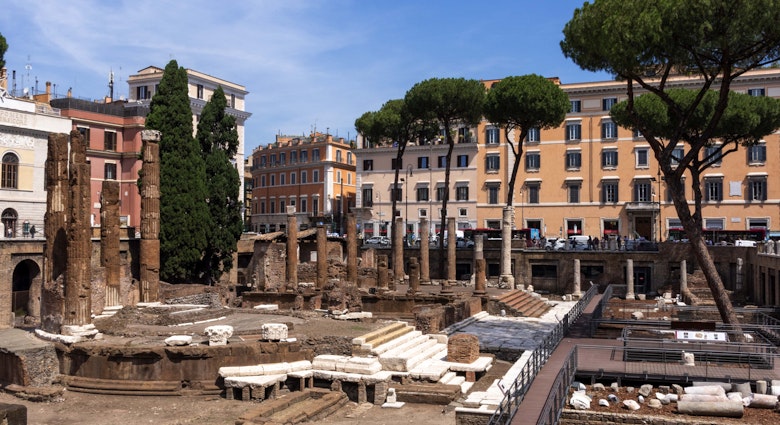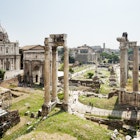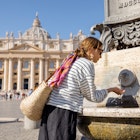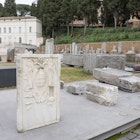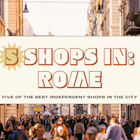Rome’s abundant museums, monuments, churches and important sites number in the hundreds, if not thousands.
In a year of visits, you might only make a significant dent (at best) in everything there is to see here. Still, it’s possible to get a real feel for the culture of the Eternal City – and the world – through a cross-section of the best ones, with a museum for every age and mood. From walks among ruins in the Roman sunshine to explorations in opulent, art-filled villas, here is our guide to the city’s most vaunted – and underrated – treasures.
1. Vatican Museums
Rome’s most unmissable museums
Visiting the Vatican Museums is thrilling, unforgettable and a true must for any traveler to Rome. Highlights include the spectacular collection of classical statuary, a suite of rooms frescoed by Raphael and the Michelangelo-decorated Sistine Chapel – which does live up to the hype. Don’t forget that you can tour the opulent gardens, too.
Note that the Vatican’s museum complex is not for the faint of heart. Corridors lined with exhibits and treasures stretch for over 7km (4mi), and you’ll find more masterpieces in a single gallery than in many small countries. Before you take the plunge, do a little research to decide where to focus your time, and be sure to pick a strategic hour to visit. Tuesdays and Thursdays are quietest, as are Wednesday mornings; afternoons are better than mornings on most days; and Mondays, when other museums close, and rainy days should be avoided altogether. Additionally, be sure to book your ticket online so you can avoid the endless ticket queues and head straight for the art.
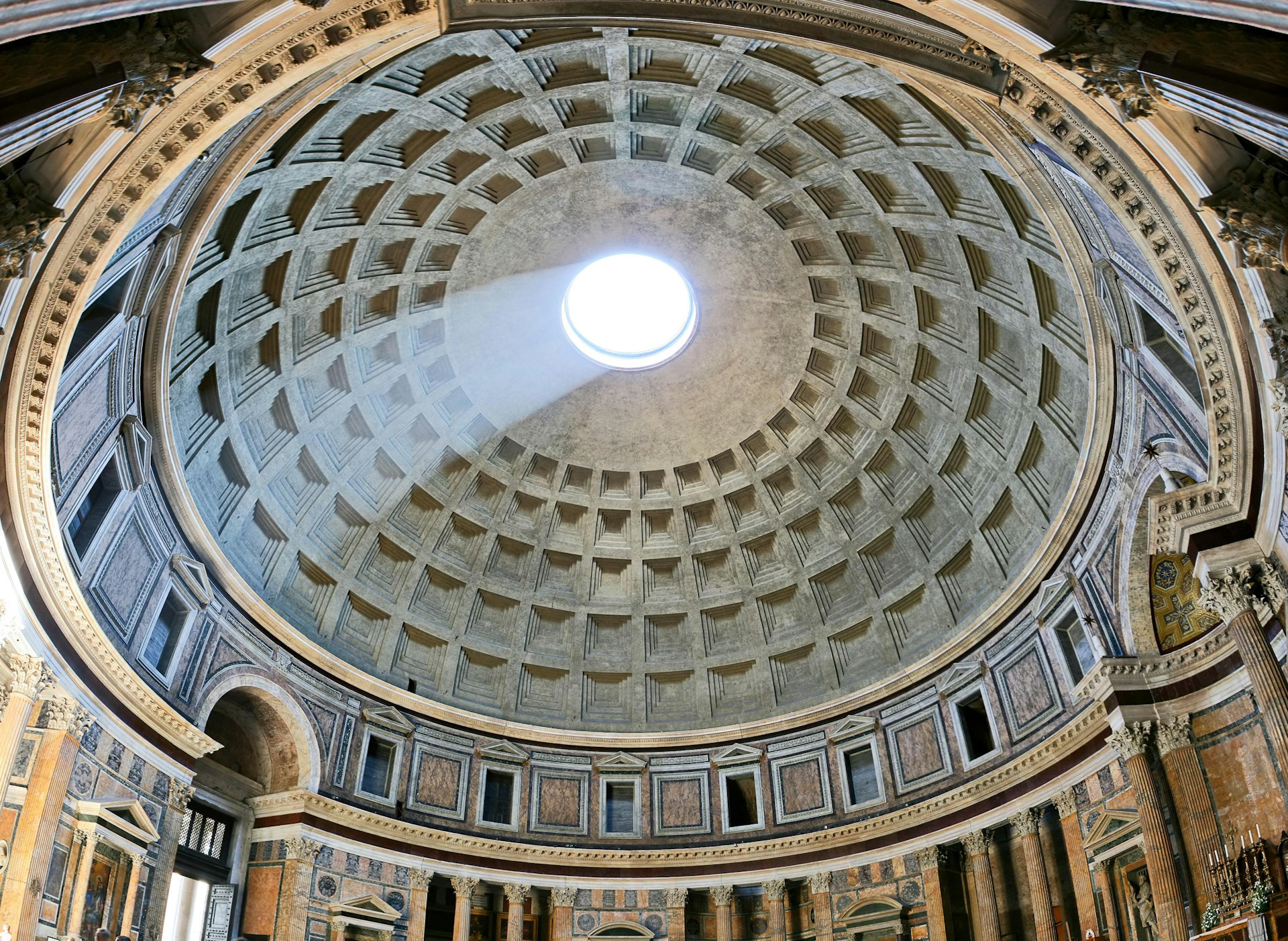
2. Pantheon
Best for history
Rome’s history is so monumental – literally – that no single museum captures it all. The one that might come closest to this feat, however, is a 2000-year-old structure at which Rome’s glorious past is so palpable that you might want to change into a toga.
The Pantheon is perhaps the best-preserved ancient building in the Western world – and therefore one of the most influential. While its graying, pockmarked exterior shows its age, the exhilarating experience of passing through the vast bronze doors, as countless others have done over millennia, is timeless. Once inside, gaze up at the largest unreinforced concrete dome ever built and its magnificent oculus, before directing your gaze toward the artwork and artifacts scattered throughout the interior. Afterward, pause for a pricey but Insta-worthy cappuccino at one of the surrounding cafes and soak up the mood on the buzzing Piazza della Rotonda out front.
3. Museo e Galleria Borghese
Best for art
If you only have the time or inclination for one art gallery in Rome, make it this one. Housing what’s often referred to as the “queen of all private art collections,” the Museo e Galleria Borghese boasts some of the city’s finest art treasures, including a series of sensational sculptures by Bernini and important paintings by such Italian masters as Caravaggio, Titian, Raphael and Rubens.
The collection dates to the 16th century, when its namesake Cardinal Scipione Borghese was the most knowledgeable and ruthless art collector of his day. The collection he built is today housed in a beautiful villa set on lovely grounds, which provide a welcome bit of fresh air amidst Rome’s cacophony. Better yet, admission is limited (book ahead), which means the two floors of intimate galleries never feel too crowded.

4. Basilica di San Pietro in Vincoli
Best free “museum”
While you can spend nearly a lifetime exploring Rome’s streets, piazzas and parks for free, most cultural attractions come with an admission charge to enter – with the notable exception of the city’s more than 900 churches. Some, like St Peter’s Basilica – also a must! – require a significant amount of time to explore. Others, like the Basilica di San Pietro in Vincoli are far more intimate. This 5th-century church is a repository of two museum-worthy sights.
Under the altar, you’ll discover the shackles used by the Romans to hold the actual St Peter (hence the church’s name: “in vincoli” means “in chains”). To the right of the altar is another world-class treasure, Michelangelo’s Moses, which forms the centerpiece of his unfinished tomb for Pope Julius II. The prophet strikes a muscular pose with well-defined biceps, a magnificent waist-length beard and two small horns – ancient symbols of wisdom – sticking out of his head.

5. Villa dei Quintili
Best for walkers
Running southwest of Rome’s center, the fabled Appian Way offers a fabulous chance to walk back into Roman times. About 5km (3mi) from the route’s start is Villa dei Quintili, a site far more extensive than the name would suggest. Sprawling across wide-open meadows, this is one of Rome’s least-visited major attractions.
The 2nd-century villa was the lavish home of a pair of consuls, the Quintili brothers. But its luxurious excess was their downfall: the emperor Commodus had them both killed before seizing the villa for himself and expanding it. The remaining ruins suggest this opulence: don’t miss the baths complex, with a pool, caldarium (hot bath room) and frigidarium (cold bath room). A small on-site museum offers useful context for the site.
Combine a visit to the villa with a walk along the Appian Way, taking in its churches, monuments, artifacts, catacombs and serene beauty.
6. Explora
Best for kids
Even the most dedicated young explorer can falter under the weight of Rome’s historic treasures. Fortunately, Explora – Museo dei Bambini di Roma (Rome Children’s Museum) is aimed at kids under the age of 12.
The city’s only kids’ museum, it’s divided into thematic sections that have everything from a play pool and fire engine to a high-speed train driver’s cabin. Everything is hands-on, feet-on and full-on fun; getting a feel for science through play and constructing fantastical creations are just some of the activities here. Be sure to book in advance as admissions are limited to prevent overcrowding. Outside, a free playground is open to all.

7. Villa Farnesina
Best small museum
The 16th-century Villa Farnesina is serenely and symmetrically proportioned on the outside – and fantastically frescoed from top to bottom on the inside. It was built for Agostino Chigi, an immensely wealthy papal banker who was also a bit of a libertine. At his banquets, for example, he’d reportedly encourage guests to throw their solid-gold plates out the window once they’d finished eating (servants would stand beneath the windows to catch them in nets).
This sort of excess is still palpable today through the villa’s lavish decor. On the ground floor is the Loggia of Galatea, attributed to Raphael and depicting the legendary sea nymph; the vault is frescoed by Peruzzi, with mythological scenes by Sebastiano del Piombo. Next door, the magnificent Loggia of Cupid and Psyche was also frescoed by Raphael, and abounds with nude deities celebrating the marriage of Cupid and Psyche in a lush garden setting.
Elsewhere, other frescoes offer a superb panorama of 16th-century Rome, while Chigi’s bedchamber is filled with cavorting cherubs, gods and goddesses.
8. Museo Nazionale Etrusco di Villa Giulia
Best unsung museum
The was a lot going on in Rome before the Romans, it turns out. Before the dawn of the Roman Empire, the Etruscans developed an advanced civilization stretching across much of central Italy and reaching its peak in the 6th century BCE. The 16th-century villa of Pope Julius III provides the atmospheric setting for Italy’s finest collection of Etruscan and pre-Roman treasures. Exhibits, many of which came from tombs in the surrounding Lazio region, range from bronze figurines and black bucchero tableware to temple decorations, terra-cotta vases and dazzling jewelry.
Must-sees include a terra-cotta statue of Apollo and the Lamine di Pyrgi (Pyrgi Tablets), three gold sheets inscribed with texts written in both Etruscan and Phoenician, and discovered during excavations an ancient seaport. And don’t miss the museum’s most famous piece, the 6th-century BCE Sarcofago degli Sposi (Sarcophagus of the Betrothed). This elaborate urn depicts a husband and wife reclining on a stone banqueting couch.

